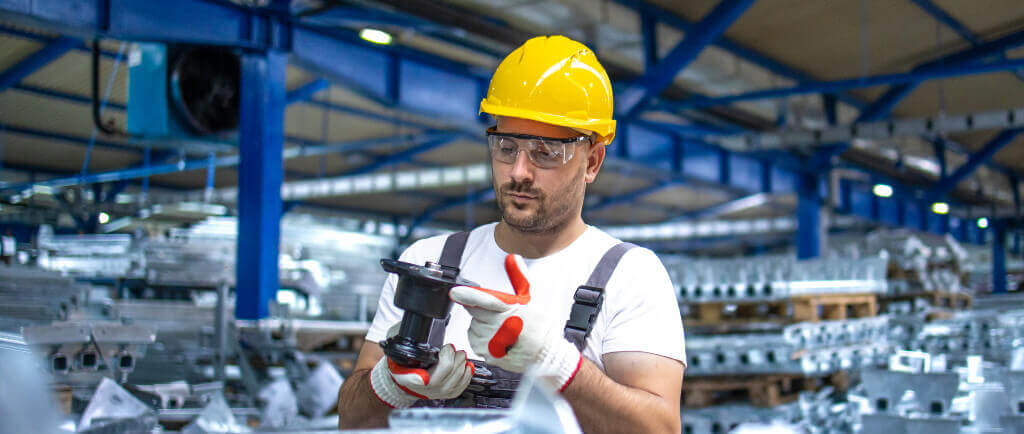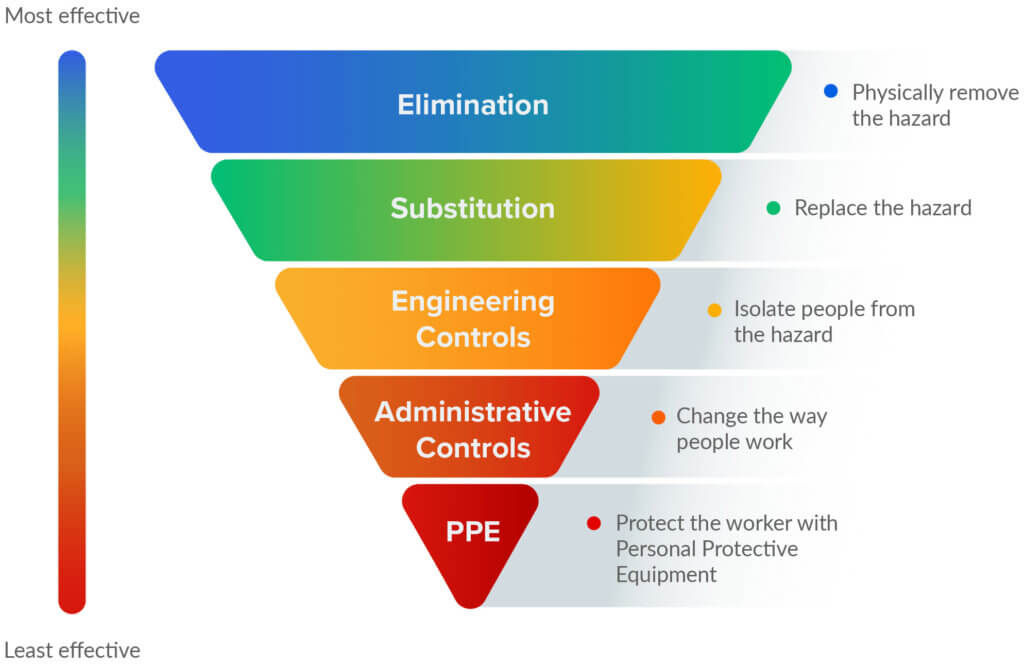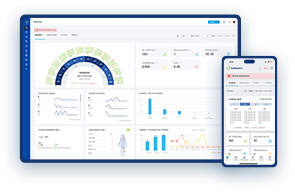
Hierarchy of Controls: Your Blueprint for Safety
Safety is a big deal. Whether you’re at work, at home, or even out for a leisurely stroll, staying safe is a top priority. We all know that accidents happen, but they don’t have to. That’s where the Hierarchy of Controls comes into play.
What’s the Hierarchy of Controls?
Hierarchy of Controls is like a blueprint for safety. A roadmap, if you will. This simple concept helps us navigate the world of risks and hazards, making it a safer place for everyone.
Picture this: We’re on a mission to keep danger at bay. The Hierarchy of Controls gives us a five-step game plan to make it happen. Each step is a layer of defense, like shields in a video game.
We start strong with the first line of defense, Elimination. It’s exactly what it sounds like: Get rid of the danger. No danger, no problem.
Next up, we have Substitution. Think of it as trading in the risky stuff for safer alternatives. It’s like swapping out that soda for a glass of water, but for safety.
Engineering Controls is level three. This step is about setting up physical barriers and safeguards to keep us out of harm’s way. It’s like building a protective force field.
Then there’s Administrative Controls, which involves rules, policies, and training. These are our guidebooks for safely navigating risky territory.
Last but not least, we’ve got Personal Protective Equipment (PPE). This is your armor, the last defense when all else fails. Helmets, gloves, safety glasses – you name it.
Related read: Our listing of the best Health and Safety Software.
So there you have it, the Hierarchy of Controls. It’s a straightforward strategy to deal with danger. In the following sections, we’ll dig deeper into each level, so you’ll be armed with knowledge to make your surroundings safer than ever.
The Five Levels of Safety Controls

Elimination:
This is the superhero of safety controls. It’s all about making the bad stuff vanish. No toxic chemicals, no dangerous machinery, just pure safety. When you eliminate hazards, you’re basically saying, “Not today, danger!” For example, consider a factory that used to store explosive materials. They decided to stop using them altogether, making the workplace safer for everyone.
Substitution:
Substitution is like a magic trick. Instead of a dangerous rabbit, you pull out a safe one. It’s all about replacing hazardous materials or processes with safer options. For instance, swapping out a harsh cleaning chemical for a gentler one. Poof! Hazard gone.
Engineering Controls:
These are like the force fields of safety. Physical barriers, shields, and safety features keep you out of harm’s way. It’s as simple as installing guardrails, using machine guards, or building walls to keep risks at bay. Imagine a construction site where workers install sturdy fencing to protect the public from potential falling debris.
Administrative Controls:
Think of this as the rulebook of safety. Policies, training, and procedures are your safety guides. They tell you what to do, where to do it, and how to do it safely. It’s like having a GPS for the safety journey. Consider a hospital where strict hygiene protocols and regular handwashing guidelines are in place to prevent infections from spreading.
Personal Protective Equipment (PPE):
When all else fails, PPE has your back. It’s like strapping on armor before a big battle. Helmets, gloves, safety goggles, you name it. They shield you from harm and are the last line of defense. Don’t leave home without your PPE! Think about a construction worker gearing up with a hard hat, steel-toed boots, and a high-visibility vest to stay safe on the job site.
Remember, when it comes to safety, we’ve got options. From eliminating hazards to strapping on that PPE, we can make our world a safer place.
But here’s the deal: Safety isn’t a one-time thing. It’s an everyday commitment. So, let’s all be safety superheroes! Share this knowledge with your friends, family, and coworkers. Encourage everyone to embrace the Hierarchy of Controls.
In the end, it’s not just about reading this; it’s about putting it into action. Together, we can build a safer world, one step at a time.

Ramesh Nair is the Founder and Principal Partner of Niyati Technologies, the company behind Safetymint.
He’s a dedicated advocate for workplace safety. Ramesh firmly believes that every individual deserves to return home safely after a day’s work. Safetymint, the innovative safety management software, emerged from this conviction. It’s a platform designed to streamline safety management, empower safety professionals, and enhance safety in workplaces.
Through his blog, Ramesh shares insights, best practices, and innovative solutions for workplace safety. Visit his social media profiles to follow him for regular updates.




